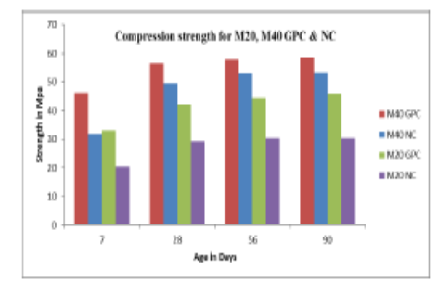


Indian Journal of Science and Technology
DOI: 10.17485/IJST/v15i48.1350
Year: 2022, Volume: 15, Issue: 48, Pages: 2748-2756
Original Article
B S Pruthviraj1*, Shrishail B Anadinni2
1Research Scholar, Department of Civil Engineering, Presidency University, Bengaluru, Karnataka, India
2Professor and Associate Dean, School of Engineering (core branches), Presidency University, Bengaluru, Karnataka, India
*Corresponding Author
Email: [email protected]
Received Date:28 June 2022, Accepted Date:28 November 2022, Published Date:27 December 2022
Objectives: To study strength parameters and sorptivity coefficient of GGBFS and fly ash based M20, M40 geo-polymer concrete. Methods: Trials were carried out to compare mechanical properties and the sorptivity coefficient for M20, M40 grade of normal concrete (NC) with M20, M40 grade of geopolymer concrete (GPC), in accordance with the design mix of IS 10262-2019. Sodium hydroxide and sodium silicate were chosen as alkaline solutions with a ratio of 1:2.1 and a molarity of 8M. A 50:50 binder material ratio (fly ash and GGBFS) is used in geo-polymer concrete by replacing the cement. A test for 7, 28, 56, and 90 days were carried out for compression, split tensile and flexure strength, followed by a 28-day test for sorptivity coefficient. Findings: GPC with molarity 8M, with a binder ratio of 0.23 for M40, and 0.29 for M20 GPC cured at ambient temperature, exhibited 14.19% higher strength for M40 grade and 43.81% higher strength for M20 grade in comparison with normal concrete. The water absorption rate of GPC with GGBFS and fly ash was found to be 1.28 times lesser than normal concrete, showing a low sorptivity sign indicating better quality of concrete for practical applications. Novelty: With the least molarity of 8M, GGBFS & fly ash (50:50) ratio-based GPC, with ambient curing alone, performed higher strength parameters in comparison with normal concrete, with less rate of sorptivity coefficient. GPC processed without heat curing has the ability to expand its application in the construction field, saving energy and costs related to heat curing.
Keywords: Strength parameters; Sorptivity coefficient; Geopolymer concrete; Normal concrete; Ambient curing
© 2022 Pruthviraj & Anadinni. This is an open-access article distributed under the terms of the Creative Commons Attribution License, which permits unrestricted use, distribution, and reproduction in any medium, provided the original author and source are credited. Published By Indian Society for Education and Environment (iSee)
Subscribe now for latest articles and news.